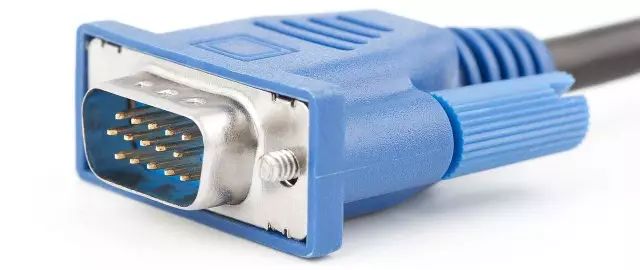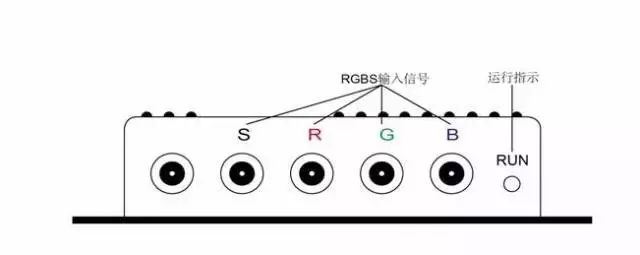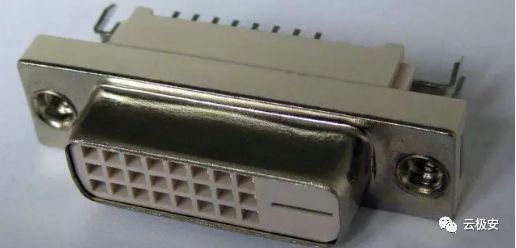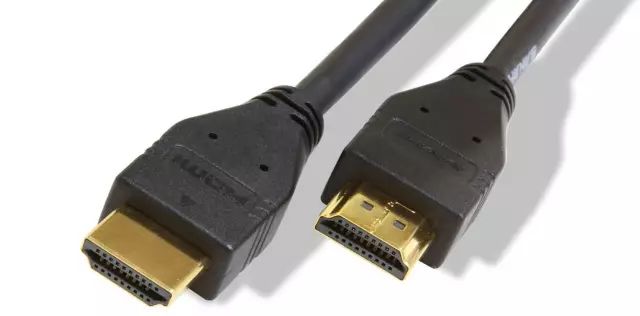Ⅰ. Video signal interface
Introduction to the types of surveillance video cables:
According to the material, there are SYV and SYWV. The physical material structure of the insulating layer is different. SYV is a solid polyethylene cable; SYWV is a high physical foam cable. The transmission performance of the physical foam cable is better than that of polyethylene. (S--coaxial cable Y--polyethylene V--polyvinyl chloride W--stabilized polyethylene)
According to the impedance, it can be divided into SYV 50-XX SYV 75-XX SYV-100 XX...XX represents the outer diameter of the insulating layer.
1. Composite video signal: the general connector is BNC, RCA (lotus head)
75 represents the resistance, and the following 3 and 5 represent its insulation outer diameter (3mm/5mm).
Video line points:
75-3 transmission distance is about 200 meters;
75-5 transmission distance is about 500 meters;
75-7 speed transmission distance is about 500--800 meters);
75-9 speed transmission distance is about 1000---1500 meters;
The speed transmission distance of 75-12 is about 2000----3500 meters.

2. S-terminal (or Y/C)
Its scientific name is called "two-component video interface", commonly known as S terminal, and the transmission distance is 15 meters short.
The S-Video connection specification is a specification developed by the Japanese. S refers to "SEPARATE", which separates the output of luminance and chrominance, avoiding the mutual interference of luminance and chrominance when outputting mixed video signals. The S interface is actually a five-core interface, which consists of five cores, including two luminance signals, two video chrominance signals, and one common shielded ground wire.
Compared with the AV interface, since it no longer performs Y/C mixed transmission, there is no need for bright color separation and decoding, and the use of independent transmission channels largely avoids signal crosstalk in video equipment. The image distortion greatly improves the clarity of the image. However, S-Video still needs to mix the two color difference signals (Cr Cb) into one chrominance signal C, transmit it, and then decode it into Cb and Cr in the display device for processing, which will still bring some signal loss. Distortion (small but still detectable when tested under the rigors of broadcast video equipment). Moreover, the bandwidth of the chrominance signal is also limited due to the mixing of Cr and Cb, so although S-Video is already relatively good, it is still far from perfect. Although S-Video is not the best, considering other factors such as current market conditions and overall cost, it is still one of the most commonly used video interfaces.

3. VGA signal
VGA (Video Graphics Array) is a video transmission standard introduced by IBM with PS/2 in 1987. It has the advantages of high resolution, fast display rate and rich colors. It has been widely used in the field of color displays. It is easy to attenuate, the transmission distance is short, and it is susceptible to interference. Its 3+4/6VGA transmission distance is 15-30M.

4. Component video (RGBHV signal)
The color difference interface is based on the S interface, and the blue difference (b) and the red difference (r) in the chrominance (C) signal are sent separately, and the resolution can reach more than 600 lines. It usually uses YPbPr and YCbCr two kinds of signs, the former represents the progressive scan color difference output, the latter represents the interlace scan color difference output. Nowadays, many TV products rely on color difference input to improve the quality of the input signal, and through the color difference interface, a variety of levels of signals can be input, from the most basic 480i to 480p with multiplier scanning, even 720p, 1080i, etc. The only way to transmit the signal to the TV is through the component input. The transmission distance of 75-2RGB is 30-50M, and the transmission distance of 75-3RGB is 50-70M.

5. DVI
DVI-A (Analog, analog) interface: This interface is actually a deformation of the VGA interface. It used to be used on some high-end CRT monitors, but now it has been basically eliminated. We often say "fake DVI interface" refers to DVI-A, because it still transmits analog signals, rather than digital signals that reflect the advantages of DVI technology.
DVI-D (Digital) interface: DVI-D is a true digital signal interface, which is more advanced than DVI-A; however, the DVI-D interface also has shortcomings, that is, users cannot use the interface. Compatible with old-fashioned CRT monitors, if it happens that there is only a D-Sub interface on the LCD monitor, then the user will only stare blankly.
DVI-I (Integrated) interface: This is a hybrid interface that integrates DVI-A and DVI-D. It is compatible with both DVI-D and DVI-A (it can also be converted to connected to D-Sub), which is the most compatible DVI interface at present
Generally speaking, when transmitting video signals below 1600×1200@60Hz, there is no obvious difference between single-channel DVI and dual-channel DVI. If your monitor can support Full HD (1920×1080) or above resolution, don't choose single-channel DVI data cable. DVI-D can only receive digital signals; DVI-I can receive digital signals and analog signals at the same time, and the transmission distance is short, 7-15M.

6. HDMI
It uses the same underlying protocol as the DVI digital signal, so it can also be interchanged with the DVI signal through the adapter, and is compatible with the DVI signal. More powerful than the DVI interface, HDMI allows the transmission of high-fidelity audio signals through HDMI cables when developing a communication protocol. The seamless connection reduces the trouble of wiring and makes HDMI more widely compatible. It supports 5Gbps data transmission rate and can transmit up to 15 meters.
Compared with DVI, HDMI can transmit digital audio signals, and adds support for HDCP, while providing better DDC optional function. HDMI supports a data transfer rate of 5Gbps and can transmit up to 15 meters, which is enough to handle a 1080p video and an 8-channel audio signal. And because a 1080p video and an 8-channel audio signal requires less than 4GB/s, HDMI has a lot of headroom. This allows it to connect the DVD player, receiver and PRR separately with a single cable. In addition, HDMI supports EDID and DDC2B, so the device with HDMI has the characteristics of "plug and play", and "negotiation" will be automatically performed between the signal source and the display device, and the most suitable video/audio format will be automatically selected.

7. SDI
SDI (serial digital interface) is "digital component serial interface". Then HD-SDI is the high-definition digital component serial interface. HD-SDI is a real-time uncompressed high-definition radio and television camera, which is another technological advancement in the field of security monitoring, providing high-definition image sources for monitoring centers.

Common control signals, RS232, RS422, RS485, IR, CR-NET (CREATOR control signal)
The transmission rate of RS232 is low. During asynchronous transmission, the baud rate is 20Kbps. The interface uses a signal line and a signal return line to form a common ground transmission form. This common ground transmission is prone to common mode interference, so it is resistant to Noise interference is weak. The transmission distance is 15 meters to 20 meters. When using a communication cable of 150pF/m, the maximum communication distance is 15m; if the capacitance per meter of cable is reduced, the communication distance can be increased. Another reason for the short transmission distance is that RS-232 is a single-ended signal transmission, and there are problems such as common ground noise and inability to suppress common mode interference, so it is generally used for communication within 20m.
RS-422 is differential mode transmission, with strong anti-interference ability, can transmit 1200 meters, and the maximum transmission rate is 10Mb/s. The length of the balanced twisted pair is inversely proportional to the transmission rate, and the maximum transmission distance can only be achieved when the rate is below 100kb/s. The highest transmission rates are only obtained over very short distances. Generally, the maximum transmission rate that can be obtained on a twisted pair line with a length of 100 meters is only 1Mb/s.
The maximum communication distance of RS-485 is about 1219 meters, and the maximum data transmission rate is 10Mbps. The RS-485 interface adopts a combination of balanced driver and differential receiver, and the anti-common mode interference ability is enhanced, that is, the anti-noise interference is good.
IR infrared (CREATOR central control infrared port) transmission distance of 150 meters.
CR-NET (CREATOR control signal) The transmission distance is 800 meters.
 English
English 日本語
日本語 한국어
한국어 français
français Deutsch
Deutsch Español
Español italiano
italiano русский
русский português
português العربية
العربية tiếng việt
tiếng việt ไทย
ไทย čeština
čeština dansk
dansk Svenska
Svenska







